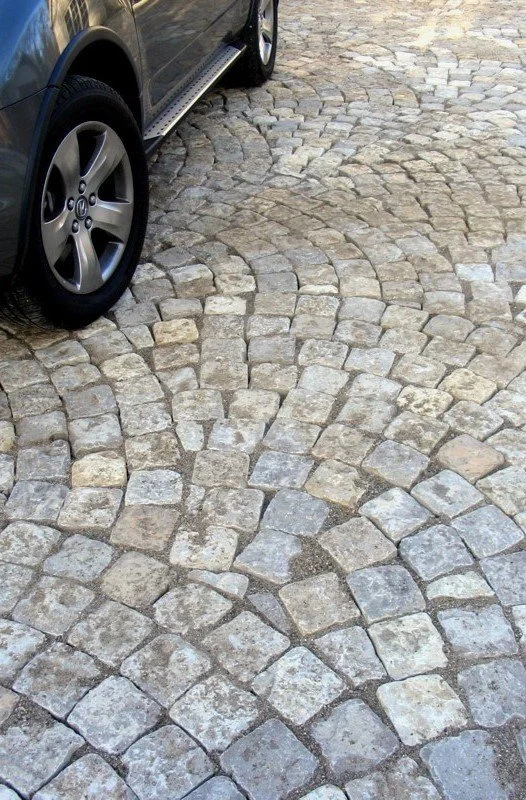—PAVING—
Segmental paving systems involve the use of independent "segments" of material, laid together in a manner to form a continuous surface capable of long-term pedestrian and/or vehicular use. With segmental paving, the base becomes a key element of the paving system, so correct installation and compaction are key. The paving units can be brick, stone, or more typically, a manufactured concrete product.
Video: Overview of paver driveways and parking lots. Pavers have the ability to outlast and outperform traditional poured-in-place pavements, while complimenting the aesthetics of your home or business.
Historically, a small aggregate such as sand was used to fill the joints between the individual units. This could provide some maintenance issues, with growth in the joints over time, if the system was not maintained correctly. However, due to advancements in the segmental paving industry, joint materials such as polymeric sand have been developed. This material hardens upon activation and binds to both itself and the paver, while still providing the flexibility required by the system. Developments such as this, have mostly eliminated the maintenance issues with segmental paving.
Not only is segmental paving simple to repair, but if some unforeseen construction, damage, or changes should occur, it is very flexible in its application. With some slight adjustments to the materials used in the base/setting bed/joint material, a permeable system can be created. Rainwater can pass through the system, decreasing and purifying runoff water from rain events, and can even provide retention of stormwater on sites where water management is an issue.
These systems provide a higher level of aesthetic value to paved surfaces, as well as an extended "aesthetic life". Although a concrete or asphalt driveway may still function after many years of use, issues such as cracking, spalling, and discoloration can make the surface look unattractive. Even manufactured concrete pavers have a psi rating that is two to three times higher than that of poured-in-place surfaces.
These systems provide a very durable paving that has proven the test of time in every climate across our nation, as well as the world. Similar systems were used as far back as Roman times, while many present-day systems are used in shipping yards and airport tarmacs.




